TRADITIONAL VIETNAMESE TEA CEREMONY
1. What is Vietnamese Tea Ceremony?
In traditional Vietnamese wedding culture, the tea ceremony is the beginning step of the entire wedding process. When a couple decides to get married, the future bride’s mother will go to take advice from a Buddhist monk or a well-respected fortune teller. Based on the couple’s horoscopes, this person will determine “suitable” dates for the tea ceremony and wedding day. Following the instructions of these spiritual identities will guarantee a prosperous and happy marriage life for the newly married couple.
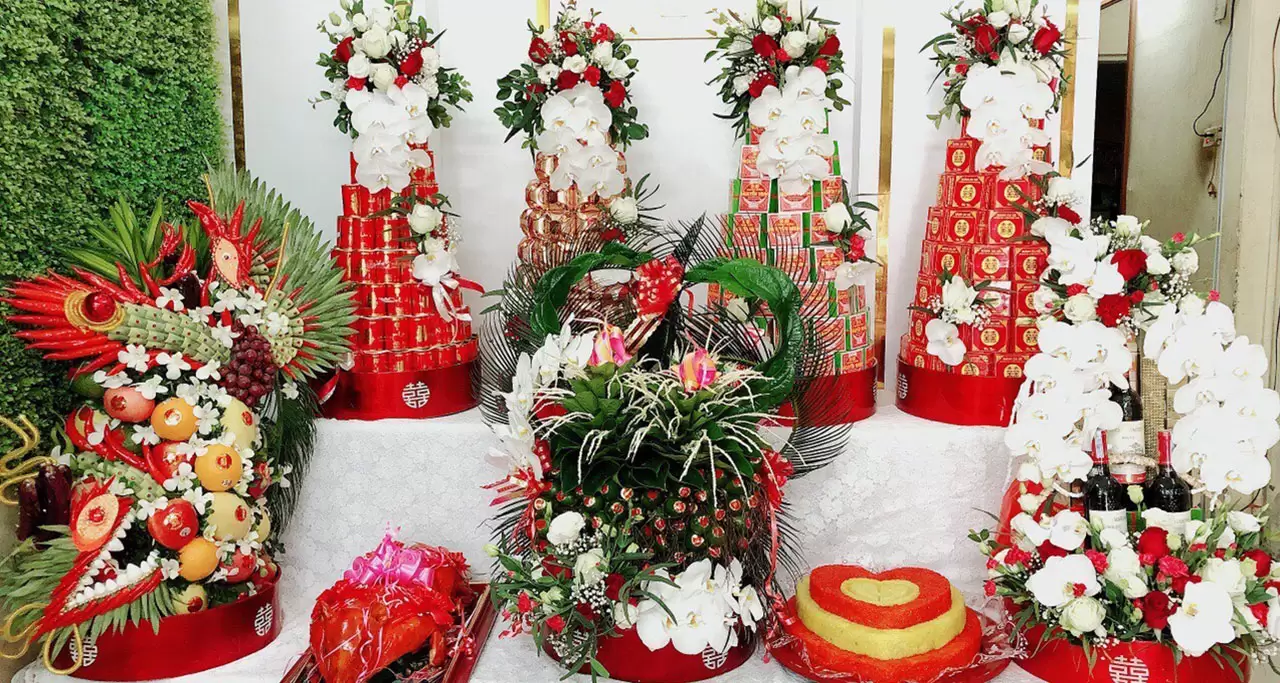
Traditional Vietnamese incorporates the engagement tea ceremony where the groom’s family would visit the bride’s family with gifts as dowry to ask for their daughter’s hand in marriage.
The tea ceremony (called as Đám Hỏi or Ăn Hỏi in Vietnamese), is usually took place one month or one week before the wedding day. It is considered as an official announcement that a wedding will take place soon and marks the day that the future bride is now the fiancée of the future groom.
In some extents, the Vietnamese tea ceremony is similar to the actual wedding ceremony, though simpler and with some variations. Let’s take a deeper look at this interesting tradition with Vietnam Travel team!
2. The Procession of a Vietnamese Tea Ceremony
2.1. The Preparation
A. Setup
The tea ceremony is mainly held at the bride’s family. Her family members will tidy and dress up the house with flowers and festive colors. Typically, there’s an archway and signage to signal to the neighbors and attendees that there is an engagement party at their home.
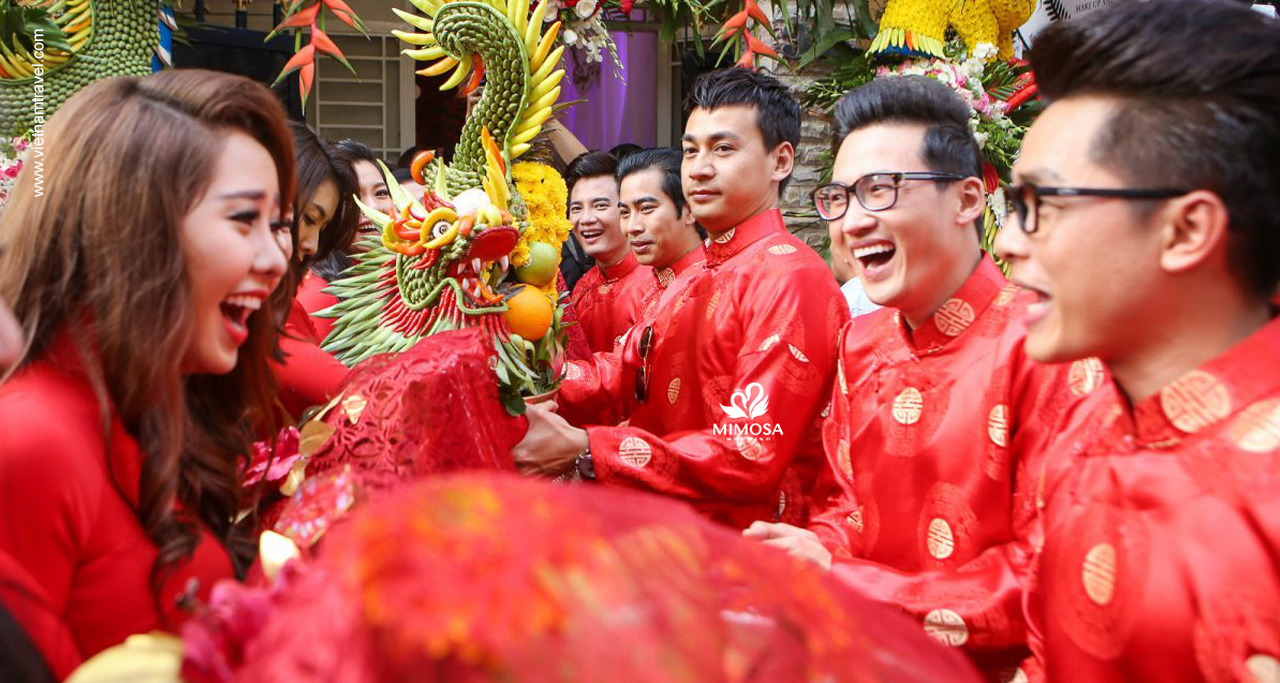
The future groom’s family and friends will prepare gifts as dowry. Traditionally, these gifts are betel and areca leaves, wine, Green tea, fruits, traditional cakes, tobacco, a roasted pig and jewelry. The gifts are contained in amount of lacquer boxes, called mâm quả in Vietnamese, that are covered in red paper or cloth and carried by the younger unmarried men of the future groom’s family. The amount of each gift is even (with the exception of the roasted pig) while the amount of boxes is odd. In Vietnamese culture, odd numbers and red color symbolize luck and wealth for the young couple. The larger number of gifts are, the more significant amount of wealth is displayed.
There will be an exchange of gifts, and it might be best to disclose how many items there will be so that there are enough young unmarried girls on the bride’s side to receive the gifts.
Parents in both families need to nominate representative for each family to do most of the talking during the ceremony. These important persons are respected male elders of each family with rather good skills of public speaking.
B. Traditional outfits
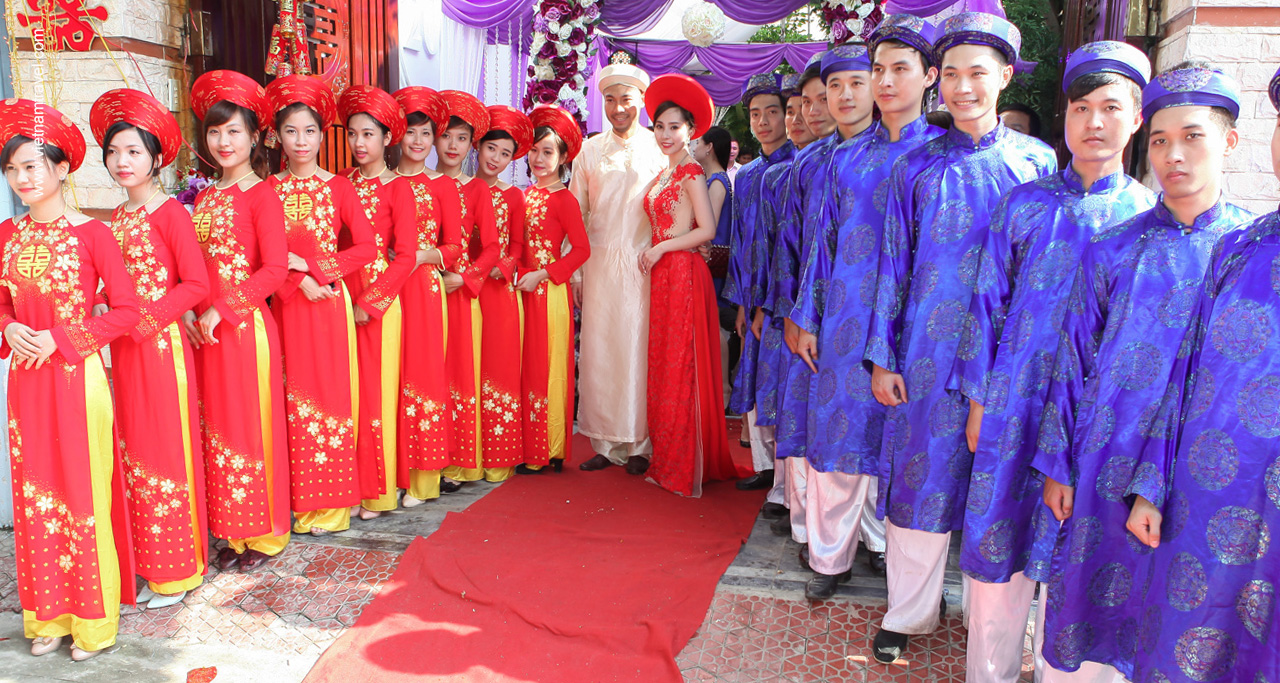
One of the most iconic symbols of the Vietnamese Tea Ceremony is the traditional attire – the Ao Dai (Vietnamese long dress). The Ao Dai is worn by both the bride and groom during the ceremony and/or during the reception as the couple makes their rounds to greet and thank their guests. The Ao Dai has a fitted top with floor length panels and a pair of accompanying pants. The bride’s dress will be much more extravagant and detailed than her bridesmaids’ or the groom’s. With Ao Dai, the bride will often wear a circular headdress called a Khan Dong. If family members or guests are also wearing Ao Dai, the Khan Dong will help single out the bride from others.
2.2. The Formalities
Traditionally the groom’s family and close friends will make their way from their home to the bride’s house. There, the groom’s representative, usually the elderly family member, will knock on the bride’s door and ask for permission to come in. Once the bride’s family has agreed, the bridesmaids will line up outside of the house to await the groomsmen and receive the lacquer boxes. At the same times, they will exchange red envelops with “lucky money” inside. Once gifts are exchanged, the bridesmaids will take the lacquer boxes into the house and put them in the most beautiful table where people can see them at first sight. Followed by the groom’s parents, the groom, close family members, and then the groomsmen. As the groom’s party and family walks through the house’s entryway, they get handshakes and lots of “welcome” or “hello” is stated.
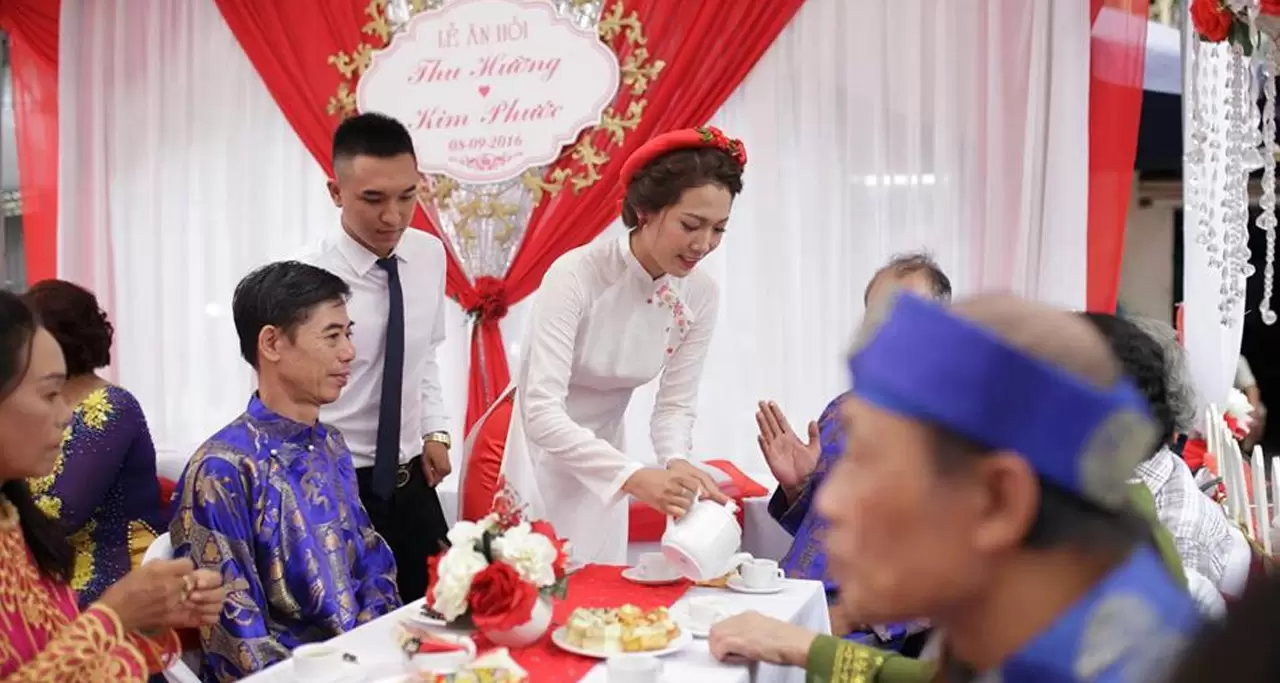
When all members settle into their seats in the bride’s living room, the representative of the groom’s side will introduce family members, explain their purpose of being there and their request for the future bride’s hand in marriage. Then the bride’s representative giving words of welcome followed by the introduction of immediate family members. During this whole time, the bride remains upstairs or in a separate room.
Once the dowry are unwrapped and approved by the future bride’s family, a request for the bride’s presence is made. Some of the gifts brought in will be placed on the ancestral altar. The mother of the bride will walk her out to meet the future groom and his family members.
The couple will light incense and bow to the altar to pay respect and ask for blessings from the ancestors. Sometimes, the couple will bow to the parents, then bow towards each other.
In the past time, future brides would embroider a pair of lovebirds, and give them to their fiancé in the ceremony. The gift was the equivalent to today’s engagement ring, and the birds symbolize fidelity and love.
2.3. The Tea Ceremony
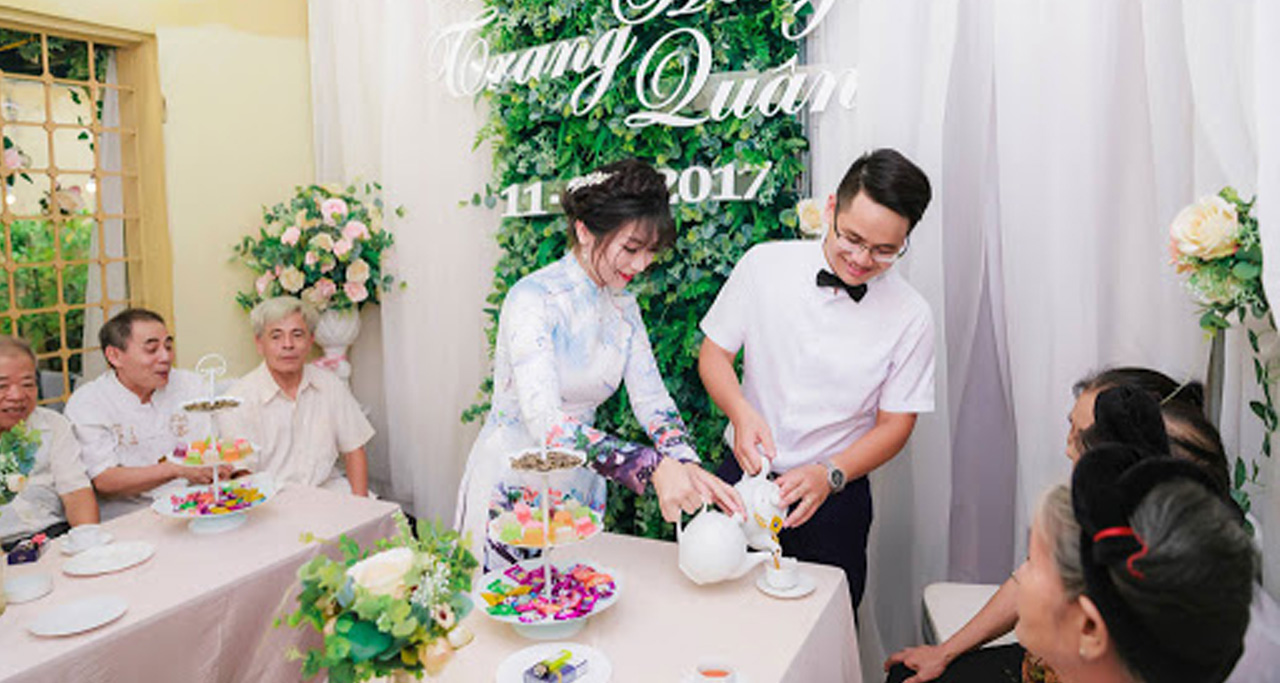
The next step is the ceremony. Typically, the couple will receive the tea tray and pours the tea into two small tea cups. Then they pick up the tea cups and offer tea to the family members starting from the eldest members such as the grandparents and the parents from both sides. Grandparents, grand uncles and aunts, uncles and aunts, and then older siblings get served tea by the bride and groom as well. This is the way to express the couple’s gratitude to all persons who take time to take part in their life’s important event.
After accepting and consuming the tea, the family members have their chance to present gifts and give words of encouragement, congratulations to the couple and marriage advice for a long and happy marriage.
2.4. The Ceremony Portraits
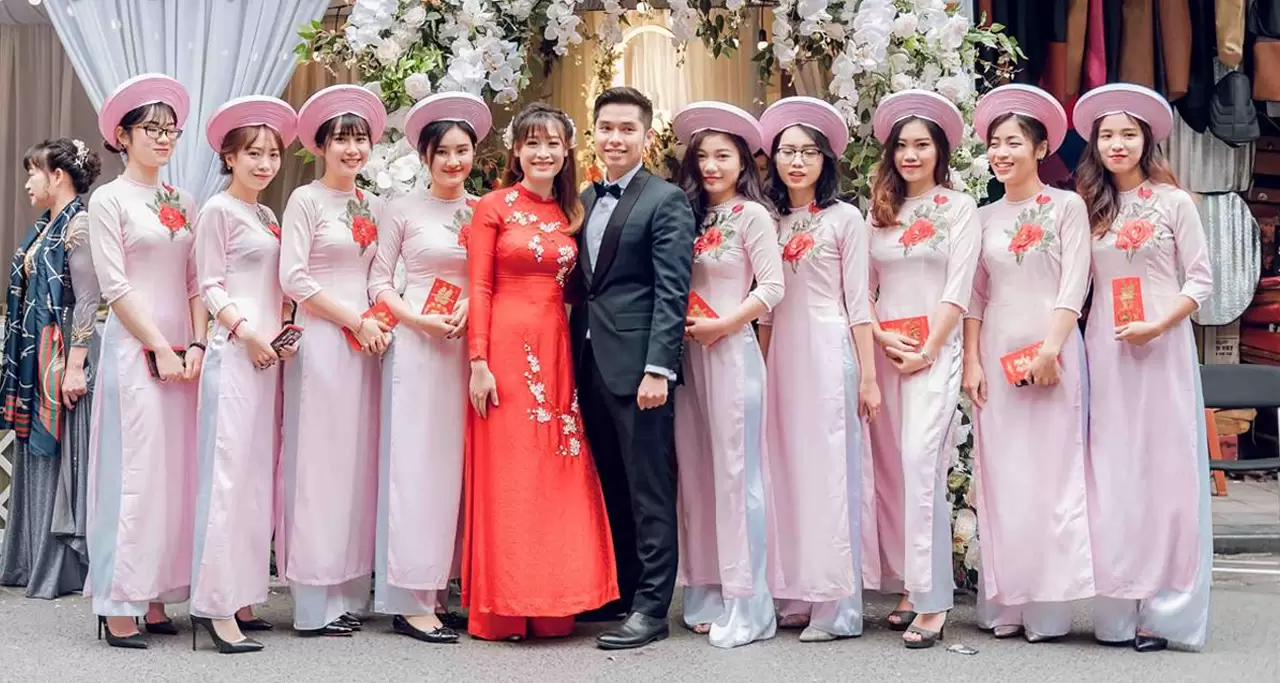
After all necessary formalities, all family members and guests will line up in front of the decorative wall for photos with the couple. If space is limited, the outdoor is a great place for group photos as well.
2.5. Lunch Party
The tea ceremony ends with a simple banquet. This will include the food that the groom party brought and cooking from the bride’s family. This is an opportunity for both sides of the two families to get to know one each other before the actual wedding day. During this lunch, the bride and groom will run off to greet all the attendees.
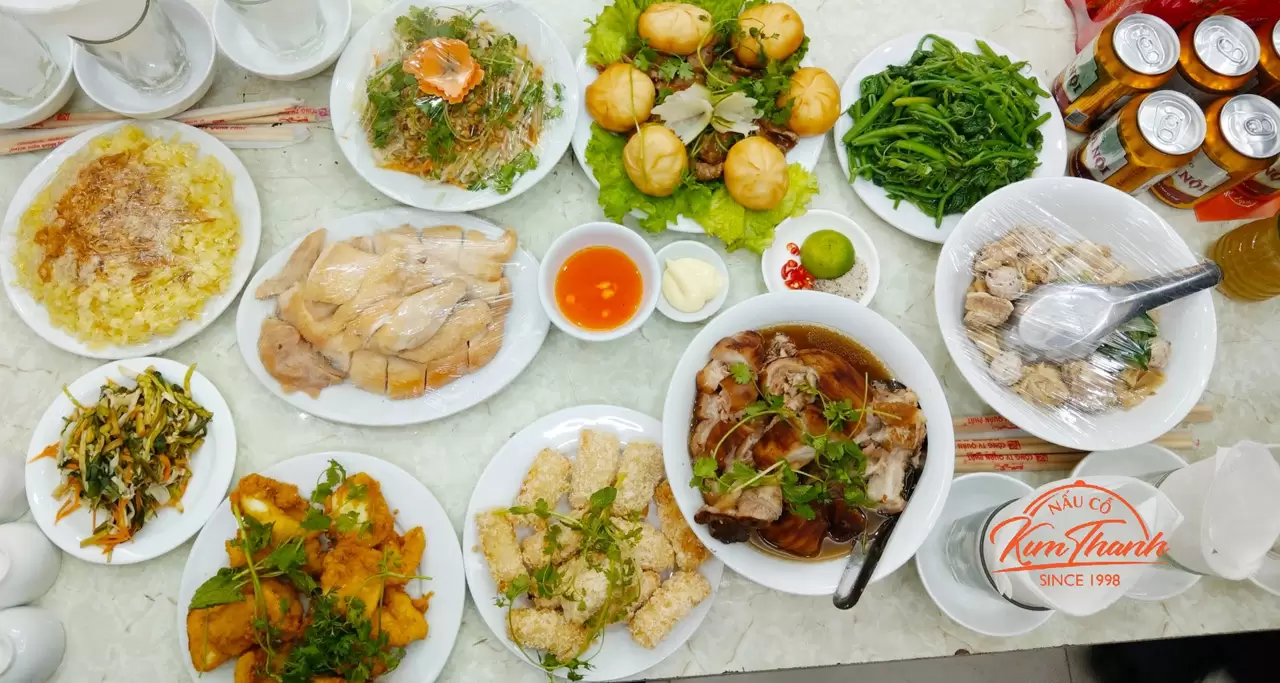
In addition, the bride’s family will return half of the gifts to the groom’s side as an appreciation of the generosity but also show that because they’re now one family, it should all be shared. Then the groom’s family will pack these items and depart.
After the tea ceremony day, parents and the couple will prepare wedding invitations and small boxes of gifts (such as betel and areca leaves, tea, traditional cakes); go to guests’ houses to invite them to join in the actual wedding day.
3. Conclusion
Nowadays, we see a lot of variations to the tea ceremony, like combined tea ceremonies that are held in one location where the wedding take place or tea ceremonies held the day before so the big wedding day has fewer activities for a simpler ceremony. Even in the traditional way or variations, it’s about paying respect and showing appreciation for the love and sacrifice of their parents, relatives, and ancestors, and for blessings and well-wishes for young couple ‘s marriage.


















